A brief post this week – short of time and researching some longer posts for the next few weeks.
A fact of London life is not just the continual building work that appears to be taking place across the whole of London, but also the never-ending road works. These have ranged from major works over the past year such as at the Elephant and Castle, and the Cycle Superhighway along the Embankment, through to a couple of hours needed to fill a hole in the road.
Road works also have a supporting cast of high-vis jackets, traffic cones, temporary traffic lights and lots of machinery with no doubt lots of planning and health and safety assessments.
My father worked for St. Pancras Borough Council Electricity and Public Lighting Department and then for the London Electricity Board, which is one of the reasons that he knew London so well, having worked across so many streets planning the installation of streetlights, cabling and electricity distribution equipment.
He took a number of photos of work taking place and I have a sample for today’s post. They show a very different working environment to that you would find today.
Firstly, two photos showing the same street scene which must have been taken only a few minutes apart. No idea where this is, there looks to be a street name on the building to the left however despite enlarging and trying different scan methods, the grain of the film does not allow the name to be read.
Not a high visibility jacket or traffic cone in sight, although if you enlarge the photo, at the end of the trench there is a sign that states Caution Roadworks.
Sadly, I always look down a trench or hole in the road to see if there is anything interesting below the surface. The following photo was in the same sequence as the two above. An arch of some form has been cut through, but is clearly seen in the side of the trench.
The above photos are from the late 1940s, the photos below are from the early 1950s and show the method of sealing a joint between multiple cables.
Again, I do not know the location and there is nothing I recognise in the background.
Above and below; heating up a joint with a paraffin blow torch.
Lastly, pouting molten metal over the joint to form a seal, probably some alloy of lead was used. Very basic protection – you would not want to get that on your skin.
The final set is back to the late 1940s and are a couple of photos I published back in July 2014 and show road works at the top of Tottenham Court Road at the junction with Euston Road and Hampstead Road. The area looks very different now – you can read the post here.
Again, very basic compared to today. A shovel, wheel barrow and a pole across the road.
Road works have always been a feature of London roads and I suspect will always be so. Next time your journey is delayed by some, rather than complain, have a look down, they are often an interesting, but ignored, feature of everyday street life.

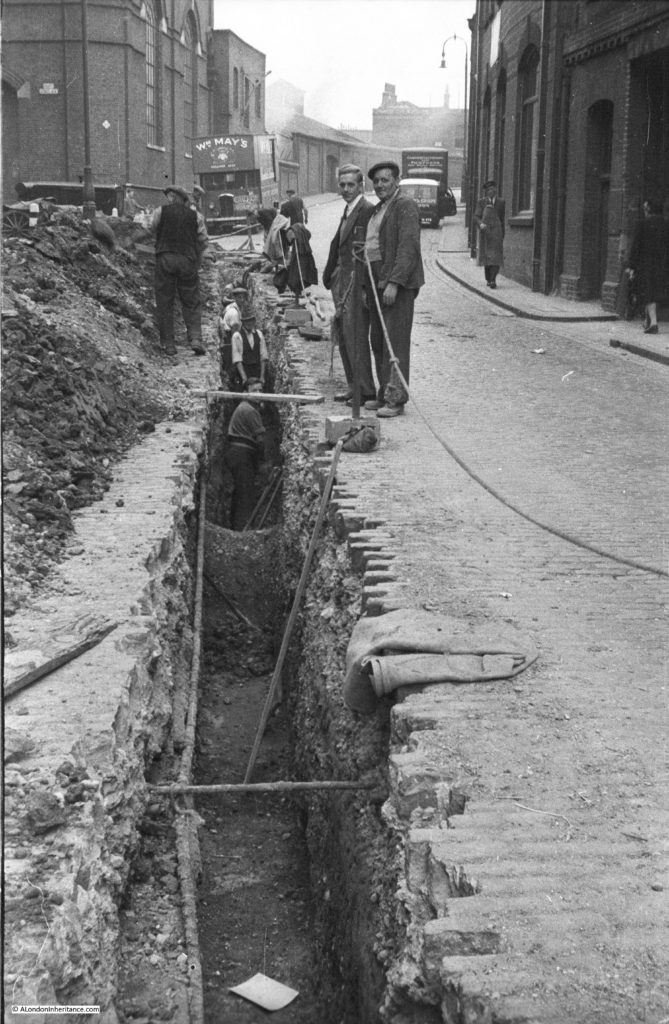
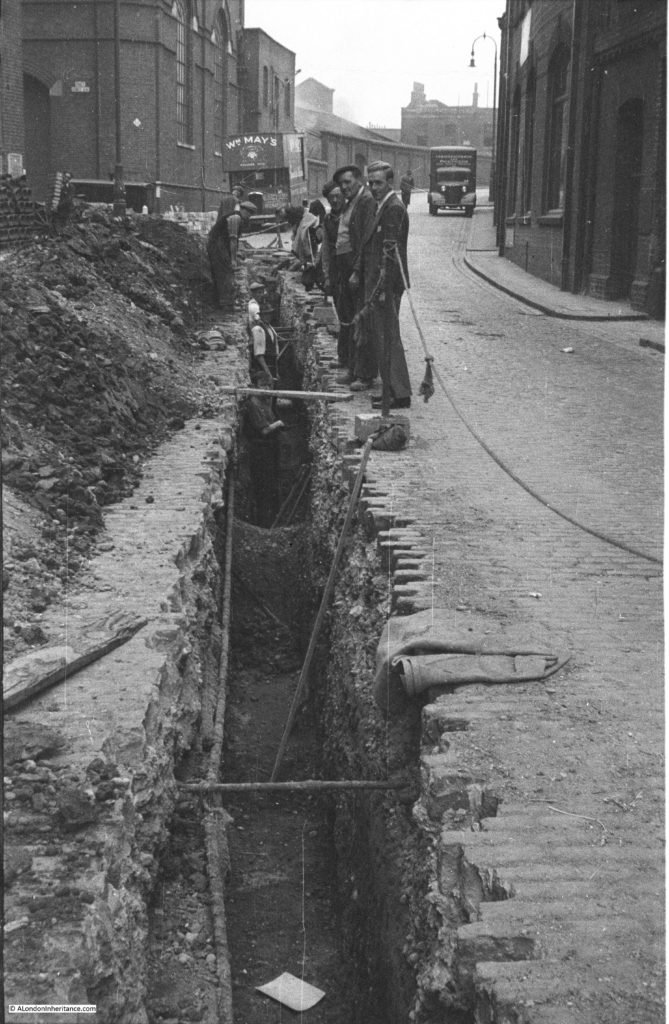
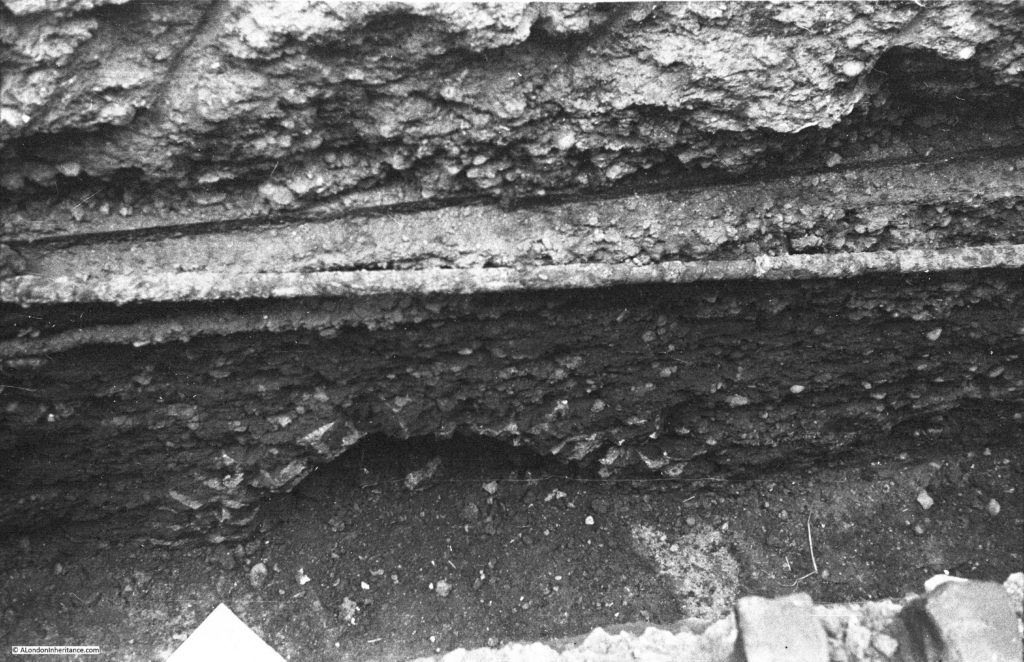
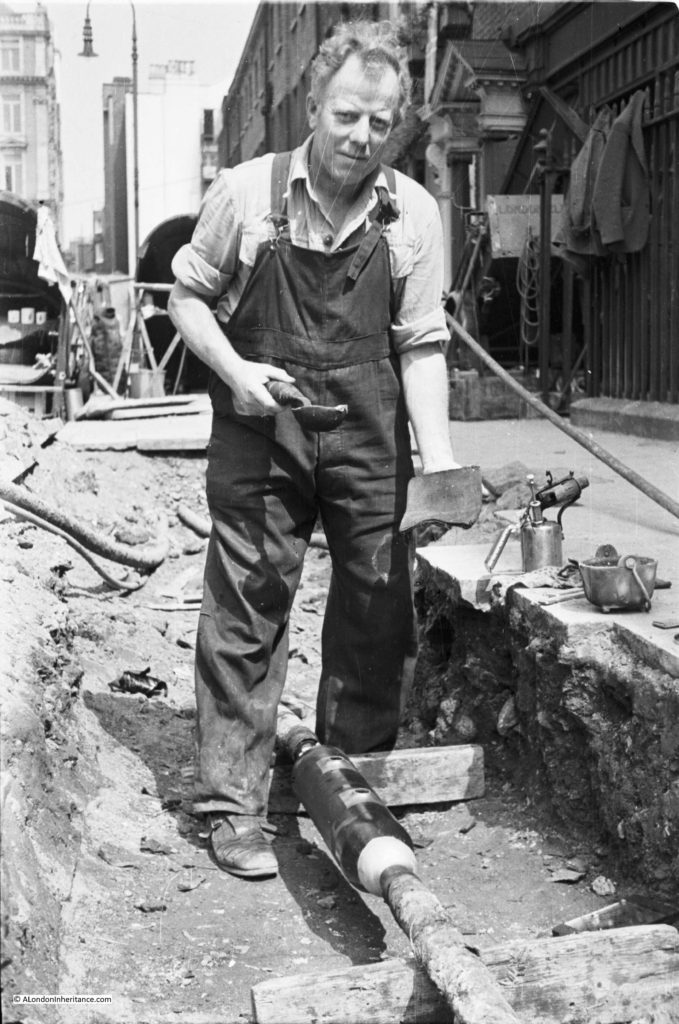
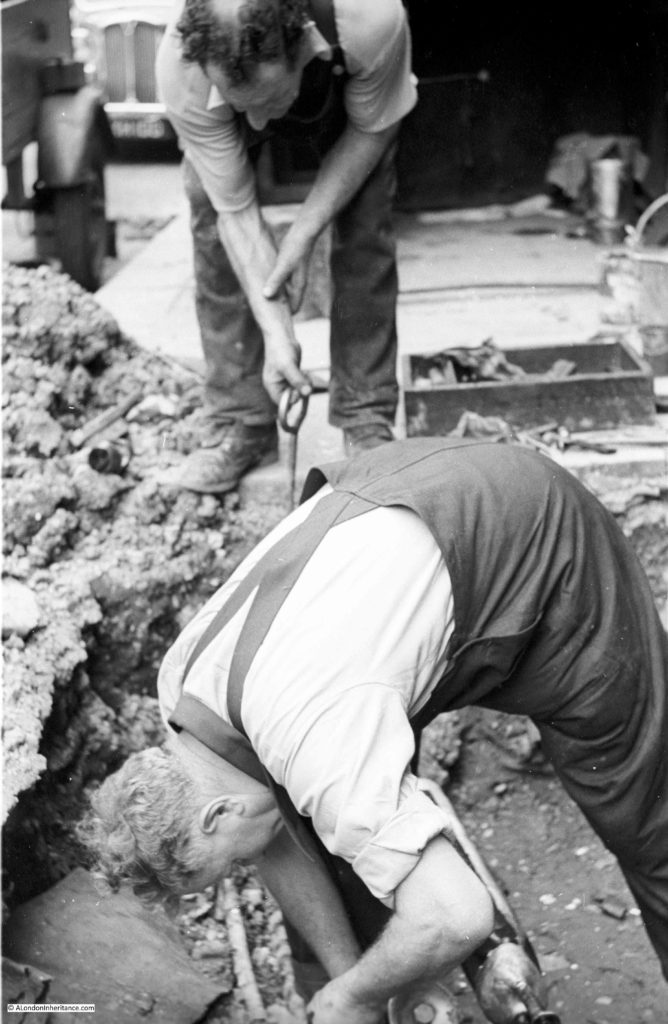
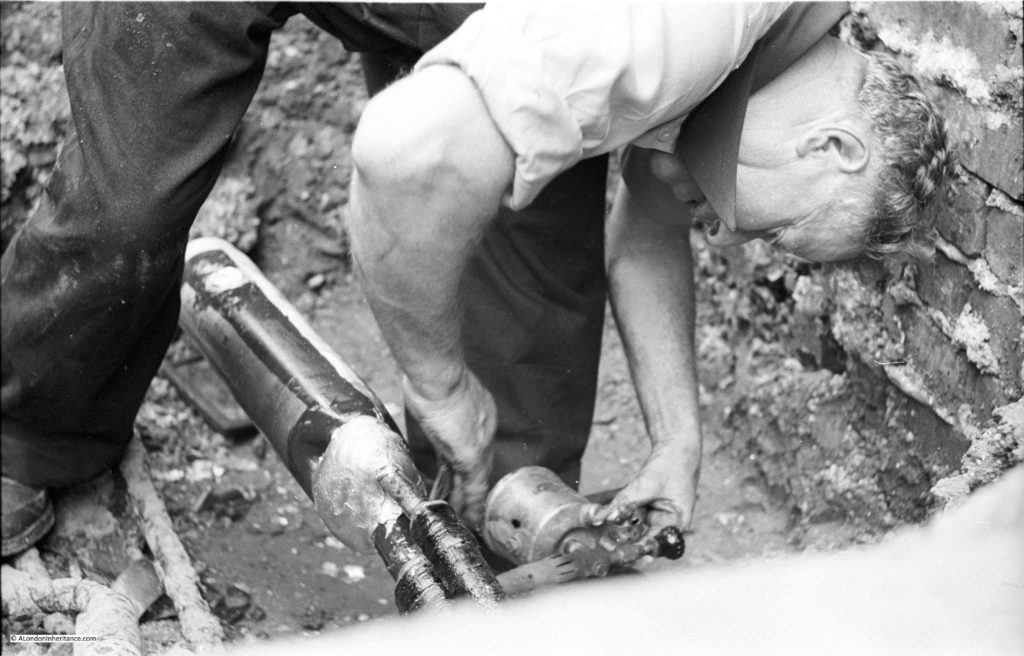
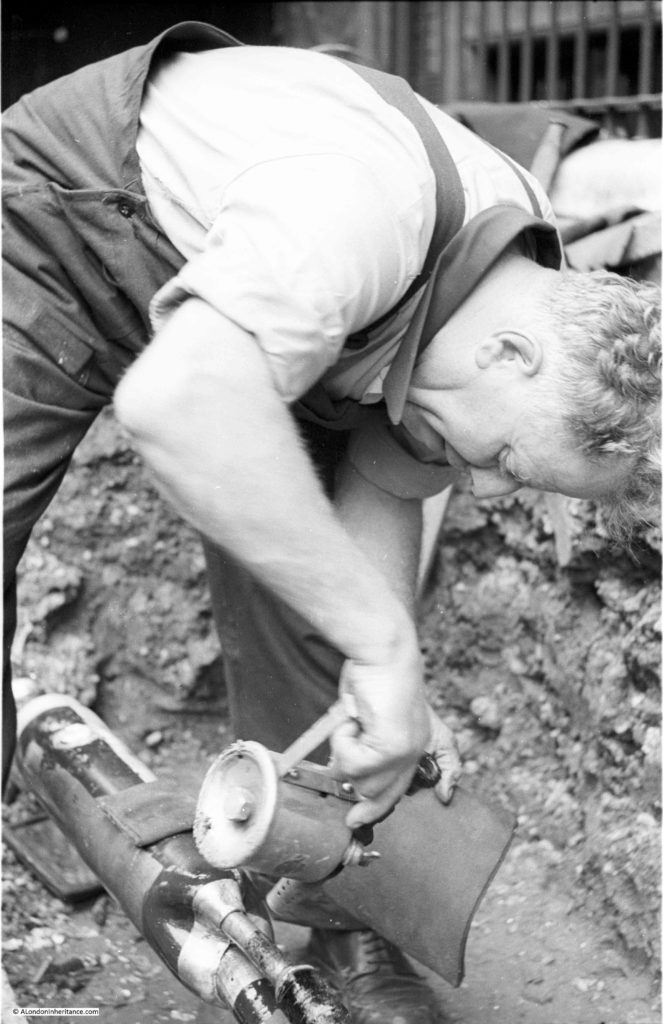
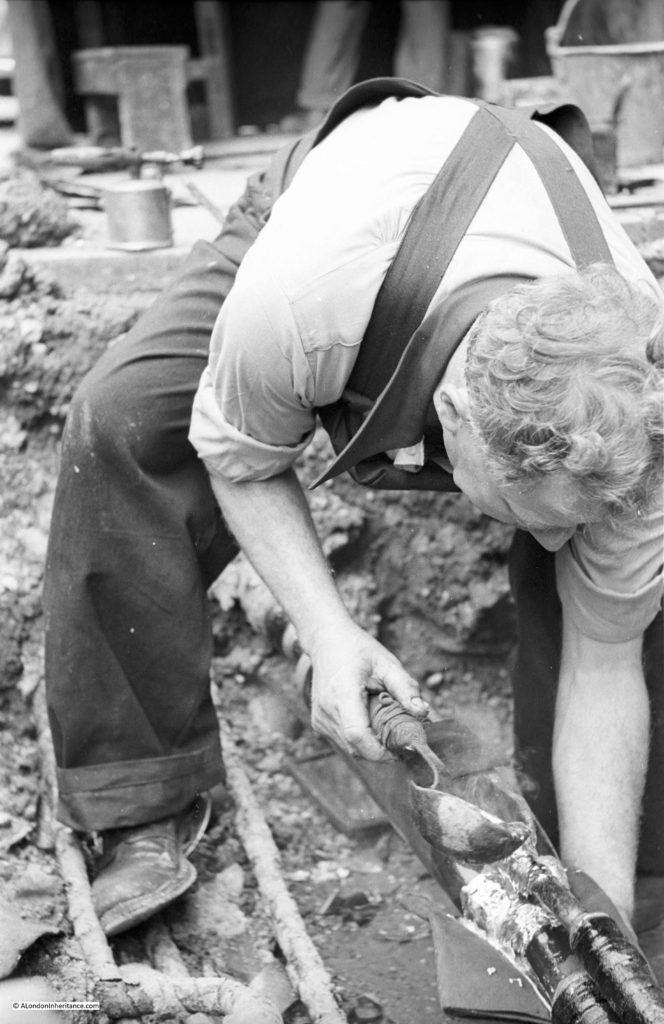
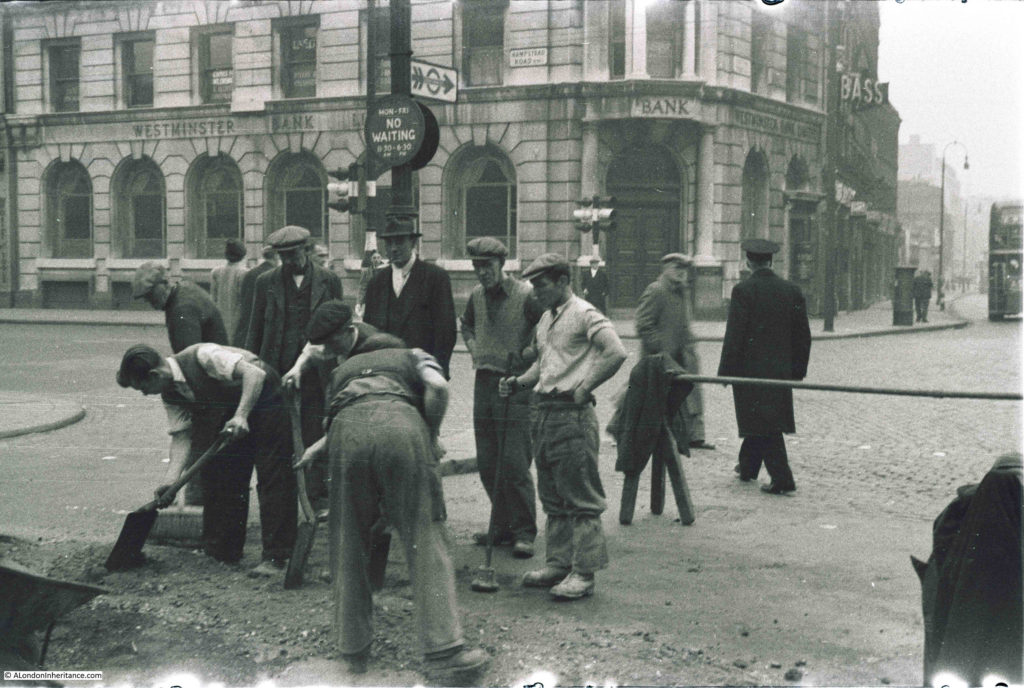
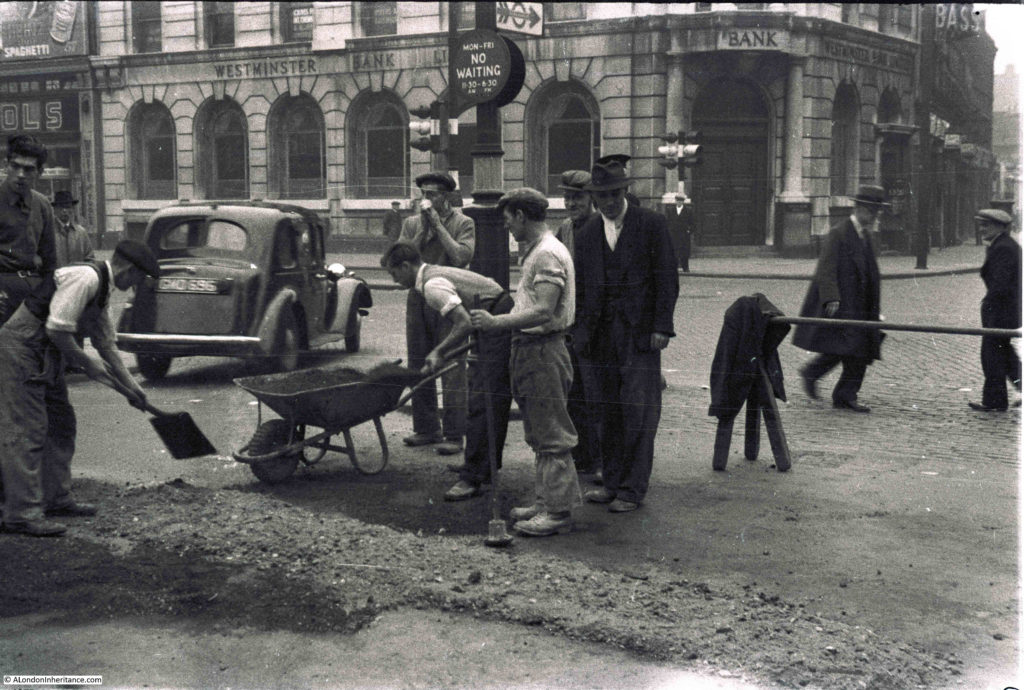
It would seem from the photographs that even then there were people who just stood around looking into the holes.
Or, to put it another way, one thing that has not changed much is that, for each person actually working, there are two watching them.
It is frustrating that we can’t identify the location of the first two. The building on the left at the road junction does also have the look of an old municipal substation. If it was, that might help pin it down… but of course (a) it probably isn’t and (b) it might have been demolished years ago.
They are good pictures of cable jointing – paper insulted, lead covered low voltage cables. The first picture is a “straight joint” and the other three are a “breech joint”, or branch or trouser joint – which is the common way of making a connexion between two cables going to separate destinations. The sequence is actually reversed. In the last of the these, the jointer is basting the join of the conductors of the cable with molten solder. The stranded copper cores of the cable would be cut and set to length against each other, tinned via a flux, and then physically joined with a copper ferrule. This ferrule would then be filled with molten solder, which when it cooled would forma perfectly strong and highly conducting join betwen the conductors. It is the basting we see in this picture that fills up the voids in the cores and the ferrule. Often this was done with the cables live – so the molten solder and the ladles would become live too. In this case I don’t think this cable is live because the jointer is not wearing rubber boots and not standing on a rubber mat – which is de rigeur for live jointing. The previous two pictures show the lead sleave being formed around the joint, and then sealed (in the first of the three) by plumbing – just in the way that lead pipes were joined when plumbers really were workers in lead. the whole operation is really quite skilled. Modern cables are much much more easily jointed, with much less direct skill. However there is so much, by far the majority, of the old paper/lead cable left, that jointers still need the skills as they are constantly jointing new cables onto old.
The fact that cables are usually jointed live accounts for one of the lightly employed men. The jointer’s mate, apart from hading the tools etc, just like a surgeon’s assitant, is there to look after the safety of the jointer because of the peculiar hazards when working live. But that’s not to say that we can’t use our ingenuity to reduce the risks and increase safety and efficiency!
I believe there is something like 20 000 km of low voltage cable in the area of the old London Electricity Board, and about 9 000 km of eleven thousand volt cable.
If it is a street sign in the first two photographs, the name of the road is not Something Road or Something Street as the first word is shorter than the second word.
It could be four letters and six or seven letters?
Could the second word end in O?
But that rings no bells with me.
Is the location of the first two photos possibly the junction of Pratt Street with St Pancras Way looking NE? I think the street sign might say
Pratt
Street NW
The curve of the road is about right for St Pancras Way.
If I’m right, then the road works would be outside the Fire Station and the building on the left would be the St Pancras Generating Station.
This link gives a view of an OS 1:2500 map of the area (1944-72):
https://maps.nls.uk/geo/explore/#zoom=18.7&lat=51.53990&lon=-0.13507&layers=170&b=1
Well, there was and is a big substation near by, on Royal College Street, just north of Pratt Street… but that might just be a co-incidence. There are cables in every street in Londond…
It may only be a coincidence, but the author’s father worked in Pratt Street around 1950.
https://alondoninheritance.com/londonvistas/the-view-from-pratt-street-camden/
Is this just a coincidence?
https://alondoninheritance.com/londonvistas/the-view-from-pratt-street-camden/